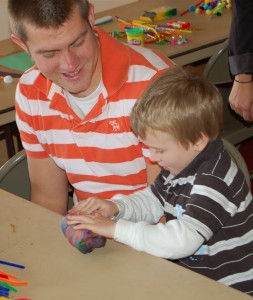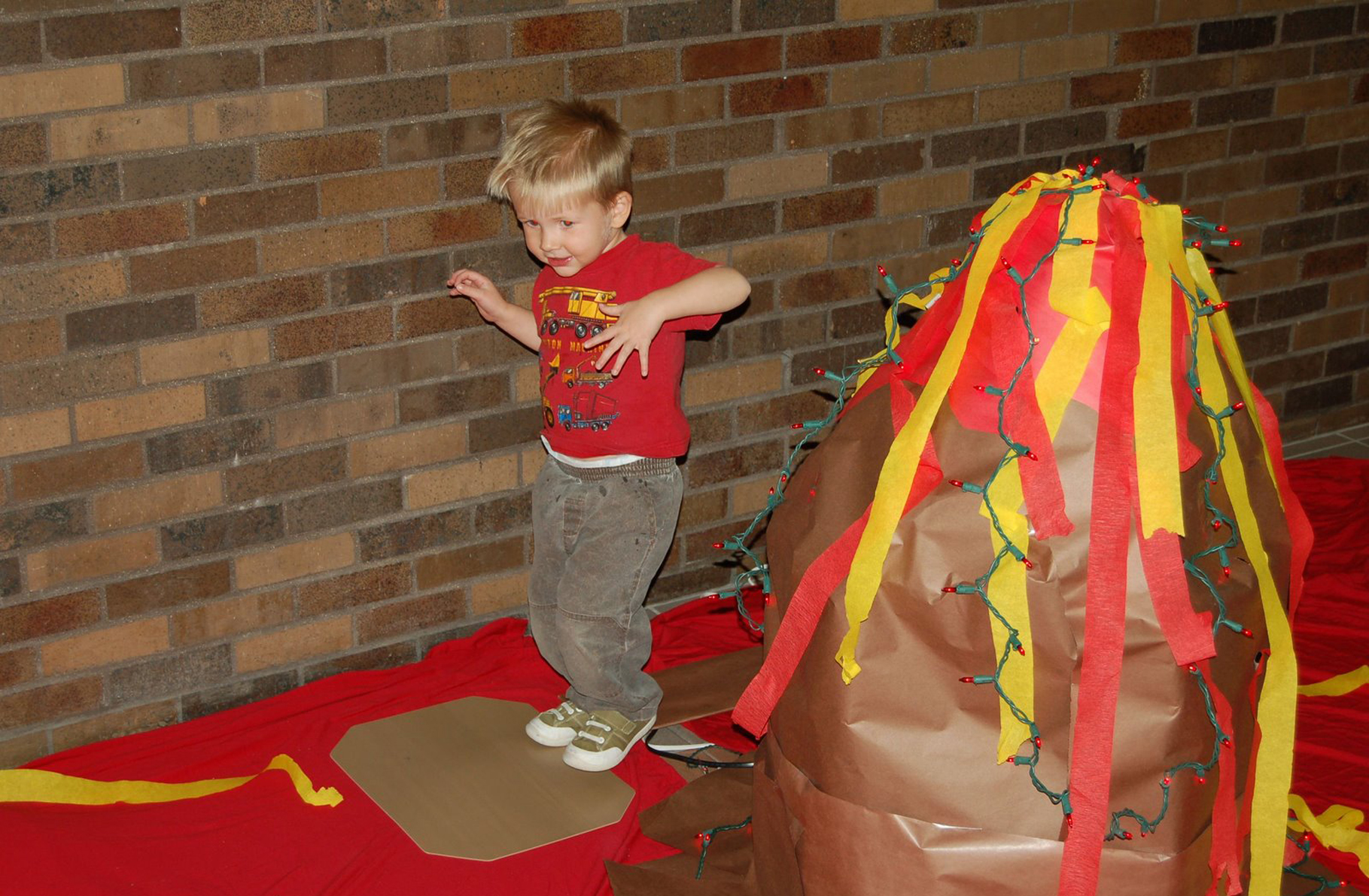The Developmental Psychology classes, taught by Assistant Professor of Psychology Kyle Chambers, are creating interactive museum exhibits for children to be displayed on Nov. 10 from 5:00 to 7:00 p.m. at the St. Peter Community Center. The classes are working in conjunction with Creative Play Place, an indoor play area for children, and the Children’s Museum of Southern Minnesota.
Chambers’s Developmental Psychology classes have done the museum project for the past three years. Chambers developed the idea of interactive development exhibits with Executive Director of the Children’s Museum of Southern Minnesota, Peter Olson, after a conversation at an early childhood development meeting. Chambers and Olson have since worked together to provide the learning experience for children in St. Peter and for Gustavus psychology students.
The classes are divided into twelve groups of about five students each who work together to create the exhibits. These exhibits will have interactive features for children that focus on one of the five specific cornerstones of childhood development: building relationships, creative expression, investigative world, connecting with nature and experiencing well-being.
After students choose a cornerstone, they spend weeks researching how creativity and science interconnect and the roles it takes in childhood development. They then begin building prototypes of their exhibits.

“Representatives from the board of the museum come, listen to their concepts and give feedback to the students. They give suggestions on how to improve and structure their exhibits,” Chambers said.
In the years past, over 100 children in the St. Peter area have visited the exhibit. Examples of exhibits in years past include Lavalavaland, an activity teaching cooperation in which a child must move through an obstacle course with the help of another child. Another exhibit had plain boxes of varying shape, size and function that children could use to make tunnel systems, instruments or masks which taught that with basic materials, one can do very creative things. An example of a project from this year’s class comes from Sophomore Psychology Major Caitlin Bayer.
“Our group’s exhibit is ‘Connecting With Nature,’ and it focuses on the sense and the seasons. We have three different boxes with different materials in it. The kids use their sense of touch, smell and sound to figure out what’s there,” Bayer said.
Such projects create opportunities for Gustavus students to further enhance their studies. In 2005, the Children’s Museum of Southern Minnesota was incorporated as a non-profit organization. Currently, it is located at two temporary donated places.
“We are currently working on plans for a permanent facility in Mankato. Part of the process of developing the museum includes developing everything that will be happening within the play’s walls,” Olson said.
“If students involved in the class project enjoy working with exhibit prototypes, they have the opportunity to take on a semester long internship,” Olson said.
Senior Psychology and Accounting Major Kelsey Marcks, who took the class in fall of 2009, interned at the museum. As an intern, Marcks observed children at play to see how they interacted with each other and how they utilized interactive exhibits.
“Gaining the internship opened up a new career area for me to use my psych degree. A cool aspect about the internship was that I got to observe children learning and making all these connections while to them they were just playing,” Marcks said.
Marcks is also one of a couple of students who has come back to aid Chambers and his Developmental Psychology classes by serving as a resource for the current students.
“The goal of the exhibits is for the kids to play and the parents to learn. You learn so much about child development and child psychology from watching the kids play. I recommend the class because it is interesting and so personal to us and our development,” Marcks said.
“One thing I like about the purpose of the exhibits is that it lets children learn in a way that is interesting and intriguing to them. They realize that learning doesn’t have to be boring,” Junior Psychology Major Paige Hoehn, a student currently in the class, said.
The exhibits are targeted to boys and girls from ages two to seven. The exhibits are also welcome to the parents of the children attending to experience. Parents are given information on the purpose of each exhibit in the hope that they can recreate similar hands-on experiences at home that are both fun and effective in learning.
The exhibits will be on display Nov. 10 from 5:00 to 7:00 p.m. at the St. Peter Community Center.
